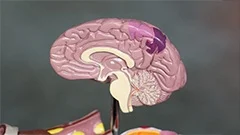Introduction
The respiratory system is a critical organ system in animals, responsible for the process of respiration, which involves gas exchange between an organism and its environment. This exchange facilitates the intake of oxygen (O2) and the expulsion of carbon dioxide (CO2). In this comprehensive course, we will delve into the structure, function, regulation, and disorders associated with the respiratory system in various animals, providing a profound understanding of this essential biological process.
Anatomy and Structure of the Respiratory System
Overview of the Human Respiratory System
- The respiratory system consists of the nose, pharynx, larynx, trachea, bronchi, bronchioles, and lungs.
- Air enters the body through the nostrils or mouth and travels down the trachea before branching into the right and left bronchi.
- The bronchi further divide into smaller airways called bronchioles, which end in tiny sacs known as alveoli.
- The lungs are divided into lobes, with each lobe containing many alveoli for gas exchange.
Comparative Anatomy: Respiratory Systems of Different Animals
- Fishes possess gills instead of lungs, which are located on the sides or bottom of their bodies and contain filaments that facilitate gas exchange in water.
- Amphibians also use gills during their aquatic phase but develop lungs during metamorphosis for terrestrial respiration.
- Reptiles, birds, and mammals have similar respiratory systems to humans, with some variations in the number of lobes, bronchi divisions, and lung structure.
Gas Exchange: The Process of Respiration
Ventilation and Pulmonary Circulation
- Ventilation is the movement of air into and out of the lungs, driven by the diaphragm and intercostal muscles.
- Pulmonary circulation involves the delivery of oxygenated blood from the pulmonary veins to the left atrium, while deoxygenated blood travels to the right atrium via the superior and inferior vena cava.
- Oxygenated blood then passes through the lungs' capillaries, where gas exchange occurs in the alveoli.
Diffusion and Gas Exchange
- The process of diffusion allows oxygen to move from high concentration (alveoli) to low concentration (bloodstream), while carbon dioxide diffuses in the opposite direction.
- Hemoglobin, a protein in red blood cells, binds to oxygen during pulmonary circulation, facilitating its transport to the body's tissues.
- The oxygen-depleted hemoglobin then releases CO2 as it circulates through the systemic capillaries and is expelled from the lungs during exhalation.
Regulation of Respiration
Central and Peripheral Chemoreceptors
- Central chemoreceptors in the medulla oblongata respond to changes in arterial O2 and CO2 levels, triggering respiratory responses such as increased ventilation.
- Peripheral chemoreceptors located in the carotid bodies and aortic arch respond to changes in blood pH and stimulate respiration when oxygen levels are low or carbon dioxide levels are high.
Feedback Mechanisms
- Negative feedback mechanisms regulate respiration by modulating ventilation based on arterial O2 and CO2 levels, maintaining homeostasis within the body.
- Hypoxia (low oxygen levels) stimulates increased ventilation, while hypercapnia (high carbon dioxide levels) inhibits it.
Respiratory Disorders and Clinical Implications
Common Respiratory Disorders
- Chronic Obstructive Pulmonary Disease (COPD) is characterized by progressive obstructive airway disease, affecting millions worldwide.
- Asthma is a chronic inflammatory disorder of the airways, causing symptoms such as wheezing, coughing, and shortness of breath.
- Pneumonia is an infection of the lungs, often caused by bacteria or viruses, leading to inflammation and fluid accumulation in the alveoli.
Clinical Implications and Treatments
- Treatment for respiratory disorders may involve bronchodilators, corticosteroids, antibiotics, and oxygen therapy.
- Pulmonary rehabilitation programs help improve patients' physical capacity, mental well-being, and quality of life.
- Preventive measures such as vaccinations, smoking cessation, and air pollution control are crucial in reducing the incidence and severity of respiratory disorders.
Conclusion
The respiratory system plays a vital role in maintaining life by facilitating gas exchange between animals and their environment. This course has provided an in-depth exploration of the structure, function, regulation, and disorders associated with this essential biological process. A comprehensive understanding of the respiratory system is fundamental for both medical professionals and biology students alike.
MCQ: Test your knowledge!
Do you think you know everything about this course? Don't fall into the traps, train with MCQs! eBiologie has hundreds of questions to help you master this subject.
These courses might interest you
Create a free account to receive courses, MCQs, and advice to succeed in your studies!
eBiologie offers several eBooks containing MCQ series (5 booklets available free for each subscriber).




